Leak Testing: A Guide
Leak Testing: A Comprehensive Guide
Leak testing is a crucial inspection process used by technicians to determine whether an object or system is operating within a defined leak limit. It plays a vital role in ensuring the safety, reliability, and performance of various industrial and consumer products.
Leaks occur when there's a defect—such as a hole, crack, or imperfection—in a component that allows the contents (liquid or gas) it holds to escape. Leak testing uses pressure to detect these flaws, enabling timely repairs during routine maintenance. This method is widely used across industries where the integrity of containers, systems, or components is critical.
Leak testing is typically applied to objects designed to contain liquids or gases. These can range from simple household items to complex industrial equipment. The goal is always the same: to identify and fix any potential leakage before it leads to failure or safety hazards.
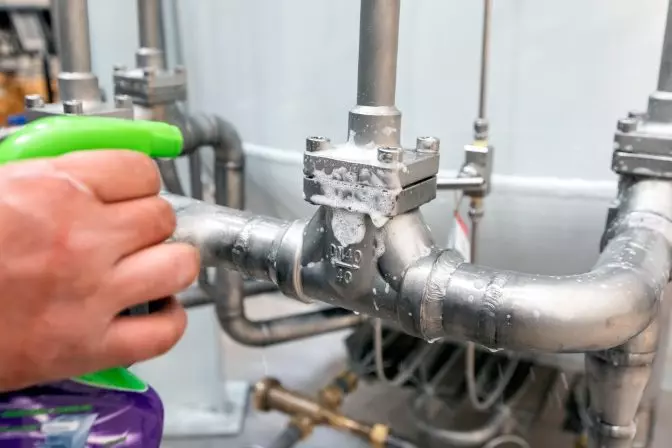
As a non-destructive testing (NDT) technique, leak testing allows inspectors to evaluate the integrity of a product without causing damage. This makes it ideal for use in quality control, compliance, and ongoing maintenance programs. Non-destructive methods like leak testing are essential in industries where product failure could lead to serious consequences.
[Non-destructive leak testing is just one of many NDT techniques. To learn more about NDT, check out this detailed guide.]
What Is Leak Testing?
Leak testing involves using pressure to detect defects that cause leaks. When a substance leaks, it naturally flows from an area of high pressure to low pressure. Inspectors exploit this principle by applying pressure to a system and monitoring for changes that indicate a leak. This helps locate the source of the defect so it can be repaired or replaced.
Leak testing is most commonly performed on closed systems where internal pressure is involved. It’s particularly useful in identifying hidden flaws that might not be visible during a visual inspection. The effectiveness of the test depends on the material and design of the object being tested, as different materials react differently under pressure.

Common defects detected through leak testing include cracks, holes, weak seals, and other structural imperfections. These issues can compromise the functionality and safety of a product, making early detection essential.
Industries that frequently rely on leak testing include:
- Automotive
- Consumer goods
- Medical devices
- Packaging
- Sealed electronics
Advances in Leak Testing
Recent technological advancements have significantly improved the accuracy and efficiency of leak testing. Innovations in sensors, valves, and data processing have made it possible to detect even the smallest leaks with greater precision. These improvements help companies enhance their manufacturing processes and reduce waste.
The integration of the Internet of Things (IoT) has further revolutionized leak testing. With remote connectivity, inspectors can now collect, monitor, and share test results in real time. This not only speeds up the inspection process but also enables better decision-making and collaboration among engineers, managers, and other stakeholders.
Leak Testing Methods
There are several common methods used in leak testing, each suited for specific applications:
- Burst Test: Applies increasing pressure until the device fails, helping to determine its strength limits.
- Chamber Test: Used for sealed systems without access points, detecting leaks through pressure changes.
- Pressure Crack Test: Monitors downstream sensors to detect “weeping†in valves.
- Pressure/Vacuum Test: Compares pressure between the test object and a reference volume to detect leaks.
- Pressure Decay Test: Measures pressure loss over time to identify leaks under positive pressure.
- Vacuum Decay Test: Detects leaks by monitoring pressure changes under negative pressure.
- Occlusion Test: Identifies flow obstructions in gas systems to find potential leaks.
Most leak tests operate at low pressures, typically at least 15 psi or 25% of the design pressure, whichever is lower. This ensures the test remains safe and effective without damaging the tested object.
Key Considerations in Leak Testing
While leak testing is a powerful tool, it requires careful planning and execution. Here are some important factors to consider:
Acceptable Leak Rate
Knowing the acceptable leak rate is crucial. Not all leaks require immediate action—some may only need monitoring. Industry standards often define what is considered an acceptable level of leakage based on the product and its intended use.
Manufacturing Purpose
Before conducting a test, it’s important to understand the original purpose of the object. Some designs intentionally allow for controlled leakage, while others must remain completely sealed. This influences how the test is conducted and interpreted.
Material Properties
The material of the object can affect how it responds to pressure. Brittle or overly flexible materials may deform under stress, which can impact test accuracy. Choosing the right test parameters is essential for reliable results.
Medium Characteristics
The substance inside the object—whether liquid or gas—also plays a role. Different substances have varying molecular sizes and pressure responses. Understanding these properties helps in selecting the appropriate testing method and pressure range.
Leak Testing Equipment
Various tools and instruments are used to perform leak tests effectively. Here are some common examples:
Air Leakage Inspection Devices
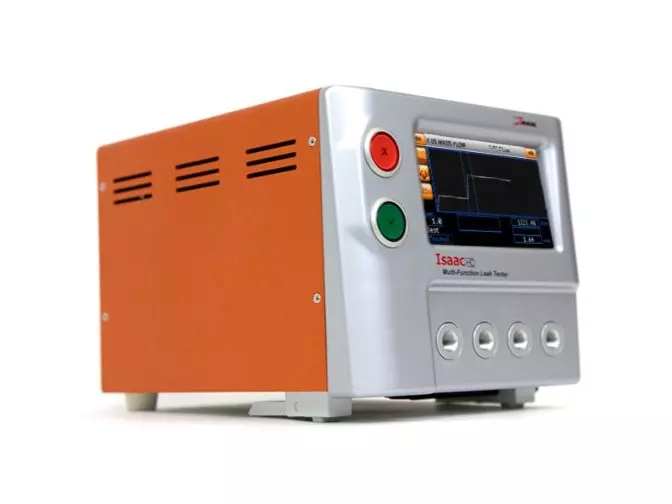 Photo credit: Zaxis
Photo credit: Zaxis
These devices provide real-time data during leak tests and are used for methods like vacuum decay, pressure decay, and burst testing. They offer accurate readings and help streamline the inspection process.
Compact Pressure Decay Leak Tester
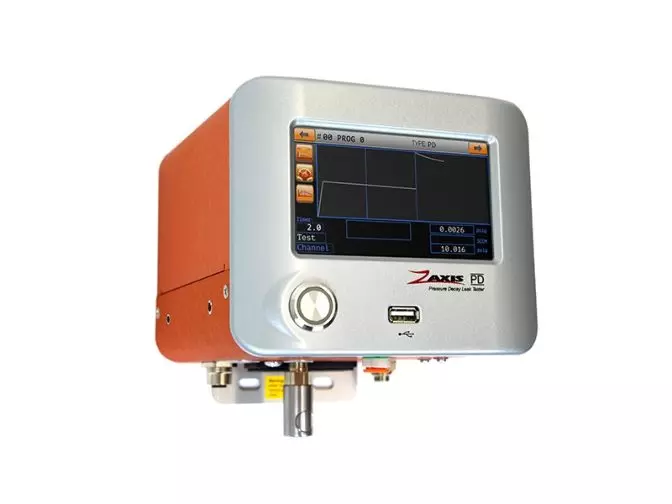 Photo credit: Zaxis
Photo credit: Zaxis
This compact tester is ideal for use near fixtures, reducing connection volume and improving test sensitivity. It helps save time and increase accuracy in leak detection.
Larger Display Leak Tester
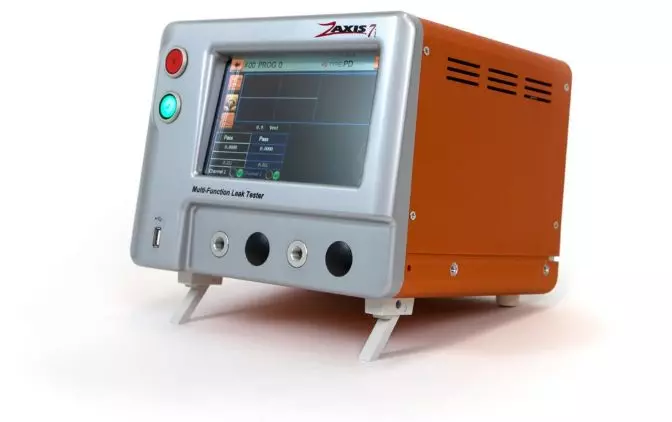 Photo credit: Zaxis
Photo credit: Zaxis
Larger models, such as the Zaxis 7i, feature bigger screens, increased capacity, and faster testing capabilities. They are suitable for more complex or large-scale leak testing operations.
Leak Standard
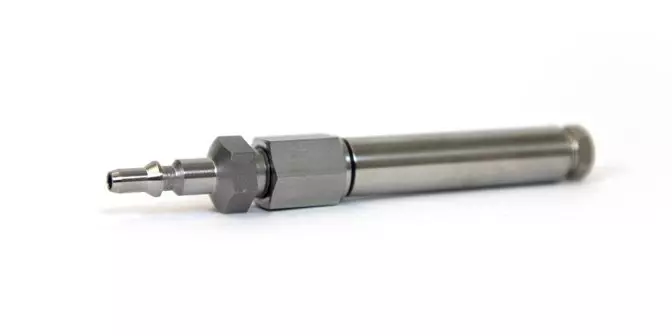
Photo credit: Zaxis
Leak standards are used to calibrate and validate test procedures. They simulate known leaks, allowing inspectors to compare results and ensure consistency across multiple tests.
Leak Testing Standards and Codes
Leak testing is governed by a variety of international and national standards to ensure consistency and reliability. These codes provide guidelines for proper testing procedures and acceptable leak rates.
ASME (American Society of Mechanical Engineers)
- ASME B31.3: Pressure Testing and Leak Testing Requirements for Process Piping
ASTM (American Society for Testing and Materials)
- ASTM E432-91(2017)e1: Standard Guide for Selection of a Leak Testing Method
- ASTM E493 / E493M - 11(2017): Standard Practice for Leaks Using the Mass Spectrometer Leak Detector in the Inside-Out Testing Mode
- ASTM E499 / E499M - 11(2017): Standard Practice for Leaks Using the Mass Spectrometer Leak Detector in the Detector Probe Mode
- ASTM E1003 - 13(2018): Standard Practice for Hydrostatic Leak Testing
- ASTM A1047 / A1047M - 05(2019): Standard Test Method for Pneumatic Leak Testing of Tubing
- ASTM E1603/E1603M-11(2017) Standard Practice for Leakage Measurement Using the Mass Spectrometer Leak Detector or Residual Gas Analyzer in the Hood Mode
- ASTM F2164 - 21: Standard Practice for Field Leak Testing of Polyethylene (PE) and Crosslinked Polyethylene (PEX) Pressure Piping Systems Using Hydrostatic Pressure
- ASTM F2786 - 16(2021): Standard Practice for Field Leak Testing of Polyethylene (PE) Pressure Piping Systems Using Gaseous Testing Media Under Pressure (Pneumatic Leak Testing)
- ASTM E2930 - 13(2021): Standard Practice for Pressure Decay Leak Test Method
- ASTM WK76995: New Practice for Field Leak Testing of Polyamide-12 (PA12) Pressure Piping Systems Using Gaseous Testing Media Under Pressure (Pneumatic Leak Testing)
ISO (International Organization for Standardization)
- ISO 20484:2017(en): Non-destructive testing — Leak testing — Vocabulary
- ISO 20485:2017(en): Non-destructive testing — Leak testing — Tracer gas method
- ISO 20486:2017(en): Non-destructive testing — Leak testing — Calibration of reference leaks for gases
- ISO 27895:2009(en): Vacuum technology — Valves — Leak test
Aromatherapy Ceramic,Absorbent Ceramics For Sale,Porous Ceramic Sheet,Round Aromatherapy Ceramic
Yixing Xiangyang Jiujiu Chinaware Industry Co., Ltd. , https://www.xyjjceramic.com
